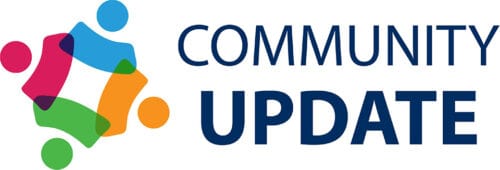Heart to Heart
February, Heart Health Month, puts a spotlight on heart disease, the leading cause of death for women in the United States.

Lisa Marie Presley died unexpectedly of heart failure on January 12 at age 54. In truth, her death may not have been so unexpected. Her grandmother, Gladys, died of heart failure at 46 and her father, Elvis, died of a heart attack at 42. Her grandfather, Vernon, also succumbed to cardiac arrest, but he made it to 63, according to the Centers for Disease Control and Prevention. So shed your tears for Lisa Marie, not just because she passed away with so many years ahead of her, but because the genetic card she was dealt left at least one strike against her.
With that kind of family history women need to be proactive.
“You should focus on reducing risk factors for heart disease, which include high blood pressure, high cholesterol and smoking. Ensure a healthy diet and regular physical activity,” said Tapati Stalam, M.D., a cardiologist with Inspira Medical Group Cardiology and a member provider of Cooper and Inspira Cardiac Care.
Dr. Rachana Kulkarni, MD, FACC, MBA, CPE, believes Lisa Marie may have ignored the underlying heart disease. Kulkarni is a cardiologist with Medicor, an affiliated medical practice of RWJBarnabas Health, and a physician leader with the RWJBarnabas Health Women’s Heart Health Collaborative.
“It goes undiagnosed for a long time,” Kulkarni said. “Symptoms are often non-specific. Shortness of breath, tired a lot of the time, chest pains. They’re ignored by the person and her family.
“Men get chest pains and they go to the doctor. Get it checked out, but a woman says maybe it’s nothing. They’re only tired and overworked. They delay seeking help and so delay getting treatment,” she added.
“More women die from heart disease than all cancers combined and they think cancer is the biggest enemy,” she said.
Heart disease is the leading cause of death for women in the United States, killing 314,186 in 2020—or about one of every five female deaths. It’s also the leading fatality for African American and white women. Among American Indian and Alaska Native women, heart disease and cancer cause roughly the same number of deaths each year. For Hispanic and South Asian women, heart disease is second only to cancer.

In the U.S., there are geographic differences. The CDC says the South is the top quintile in women with heart disease, located primarily in Alabama, Mississippi, Louisiana, Arkansas, Oklahoma, Georgia, Kentucky, and Tennessee. Pockets of high-rate counties also were found in Michigan, Ohio, West Virginia, Virginia, North Carolina, South Carolina, Missouri, Texas, Nevada, and Montana.
About one in 16 women aged 20 and older have coronary artery disease, the most common type of heart disease.
According to a University of Virginia School of Medicine media report, researchers and their collaborators have identified genes that play key roles in the development of coronary artery disease, which affects more than 20 million Americans. It’s estimated to be responsible for one in four deaths in the United States each year. The disease is caused by the buildup of fatty plaques in the walls of the arteries that supply blood to the heart, but the genetic (inherited) factors that contribute to its development remain murky.
UVA’s findings essentially pick culprits responsible for coronary artery disease out of a much larger lineup of potential genetic suspects. That gives scientists promising targets as they work to develop new and better treatments.
“Genetic studies done in more than 1 million people in the last 15 years identified hundreds of locations on our chromosomes that increase the risk of having a heart attack,” said senior researcher Mete Civelek, PhD, of UVA’s Center for Public Health Genomics and the Department of Biomedical Engineering, a joint program of the School of Medicine and School of Engineering. “We now identified the genes that are responsible for this risk at these locations. We will be able to use these findings as new therapeutic targets.”
M. Scott Dawson, M.D. is not convinced there are more cardiac events in women. “Or are we recognizing heart disease in women sooner with more aggressive diagnosis and treatment,” said Dawson, also a cardiologist with Inspira Medical Group Cardiology and a member provider of Cooper and Inspira Cardiac Care.
“In the physician-patient relationship, it is the physician’s duty to provide patients with treatment options so that everyone can make a shared decision on how to proceed with testing and treatment,” Dawson said. “Women are now just as receptive as men to taking responsibility for their own health and taking the necessary steps to optimize their wellness.”
In a study with a million women and men in the National Registry of Myocardial Infarction, 42 percent of women with heart issues did not have chest pain as a symptom, where the percentage in men was 30 percent.
Jaw, neck, back, arm and stomach pain are also symptoms to be aware of that can be atypical presentations of a heart attack. Shortness of breath, fatigue, and sweating can also be symptoms. Be aware of atypical presentations of heart attacks. Know the medications you’re on too.
It is important for women to advocate for themselves if they feel like they are having cardiac symptoms.
“Even if you are noticing subtle changes—a little bit more fatigue or shortness of breath with activity, some heart racing or palpitations—discuss them with your primary care provider or your cardiologist. It’s better to get it checked and fully assessed,” Stalam said.
Cardiac Arrest on the Football Field
On January 2, a stunned stadium full of fans in Cincinnati, and a large audience watching on television, saw Buffalo Bills safety Damar Hamlin take a hit to the chest and crumble to the turf. Benches from both teams kneeled on the field as an emergency team worked to revive Hamlin, who suffered a cardiac arrest. Emergency crews performed CPR and resorted to an automated external defibrillator to shock his rhythm back to normal.
An ambulance drove onto the field to expand the medical work performed on the 24 year-old player while he was transported to a Cincinnati hospital.
The best educated guess as to what transpired on the field differed from coronary heart disease, but just as deadly if not handled right.
The blunt trauma during the cardiac heart rhythm cycle led to the stoppage of his heart. “How useful having an ambulance and paid professionals at the field. It probably saved his life,” Kulkarni said.
The high velocity hit at the exact point in the sequence of his heart rhythm could result in a potential cardiac arrhythmia. It could have been fatal, Dawson said. “It short circuits the rhythm and the rhythm goes into chaos with excessive beats.”
It’s more common in baseball or softball where a ball travels at such a high velocity it could strike a nearby player such as the pitcher, Dawson said. The sudden impact could trigger a potential arrhythmia if the ball impacts the chest just at the right moment at the end of cardiac electrical cycle. The electrical arrhythmia can be life-threatening. It can happen to anyone, even if in good health. “It’s why you have an AED (automated external defibrillator) on site at events because time is of the essence,” he said.
It’s crucial that anyone in a similar situation remembers the instructions of basic life support, which are to confirm breathing and that the person has a pulse. If necessary, start CPR and call for help.
“As one or two people start CPR, an additional person should retrieve the AED, which will automatically determine if the victim is in a potentially fatal rhythm. Using the AED to defibrillate the heart, when in a fatal rhythm, can not only help restore the normal heart rhythm but also prevent potential brain injury from a lack of oxygen,” Dawson said.
—W.S.









